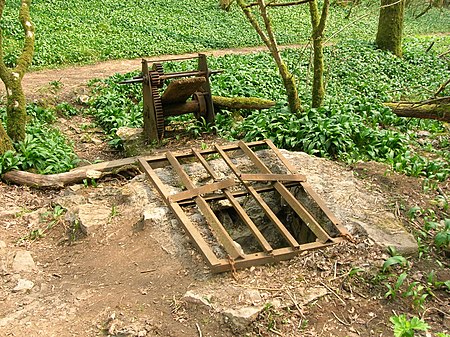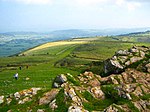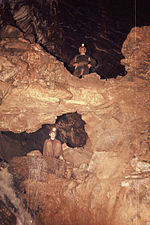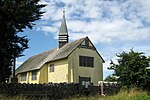The Mendip Hills (commonly called the Mendips) is a range of limestone hills to the south of Bristol and Bath in Somerset, England. Running from Weston-super-Mare and the Bristol Channel in the west to the Frome valley in the east, the hills overlook the Somerset Levels to the south and the Chew Valley and other tributaries of the Avon to the north. The hills give their name to the local government district of Mendip, which administers most of the area. The higher, western part of the hills, covering 198 km2 (76 sq mi) has been designated an Area of Outstanding Natural Beauty (AONB), which gives it a level of protection comparable to a national park.The hills are largely formed from Carboniferous Limestone, which is quarried at several sites. Ash–maple woodland, calcareous grassland and mesotrophic grassland which can be found across the Mendip Hills provide nationally important semi-natural habitats. With their temperate climate these support a range of flora and fauna including birds, butterflies and small mammals. The dry stone walls that divide the pasture into fields are of botanical importance as they support important populations of the nationally scarce wall whitlowgrass (Draba muralis).
The origin of the name "Mendip" is unclear, but it is known that there has been human habitation since Palaeolithic and Mesolithic times with a range of artefacts being recovered from caves. Neolithic, Iron Age, and Bronze Age features such as barrows are numerous with over 200 scheduled ancient monuments recorded. There is evidence of mining in the Mendips dating back to the late Bronze Age, which increased after the Roman invasion, particularly for lead and silver around Charterhouse. The difficult conditions in the area were noted by William Wilberforce in 1789, which inspired Hannah More to begin her work improving the conditions of the Mendip miners and agricultural workers. In the 18th and early 19th centuries 7,300 ha (18,000 acres) of the common heathland on the hills were enclosed. In World War II a bombing decoy was constructed on top of Black Down at Beacon Batch. More recently, the mast of the Mendip transmitting station, micro-hydroelectric turbines and a wind turbine have been installed.
There are several quarries on the Mendip Hills. Some of the stone is still carried by Mendip Rail; the other railways in the area closed in the 1960s. Although the Roman Fosse Way crossed the hills, the main roads generally avoid the higher areas and run along the bottom of the scarp slope on the north and south of the hills. The western end of the hills is crossed by the M5 motorway and A38. Further east, and running almost north to south, are the A37 and A39. A wide range of outdoor sports and leisure activities take place in the Mendips, many based on the particular geology of the area. The hills are recognised as a national centre for caving and cave diving, as well as being popular with climbers, hillwalkers and natural historians. Wookey Hole Caves and some of the caves in Cheddar Gorge are open as show caves; however, many of the caves of the Mendip Hills are only accessible to members of caving clubs. Long-distance footpaths include the Mendip Way and Limestone Link.







